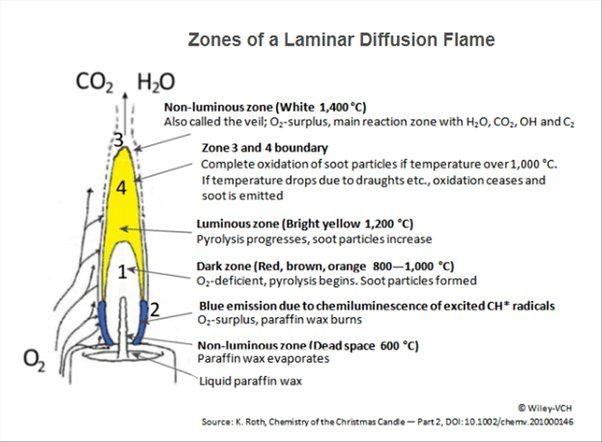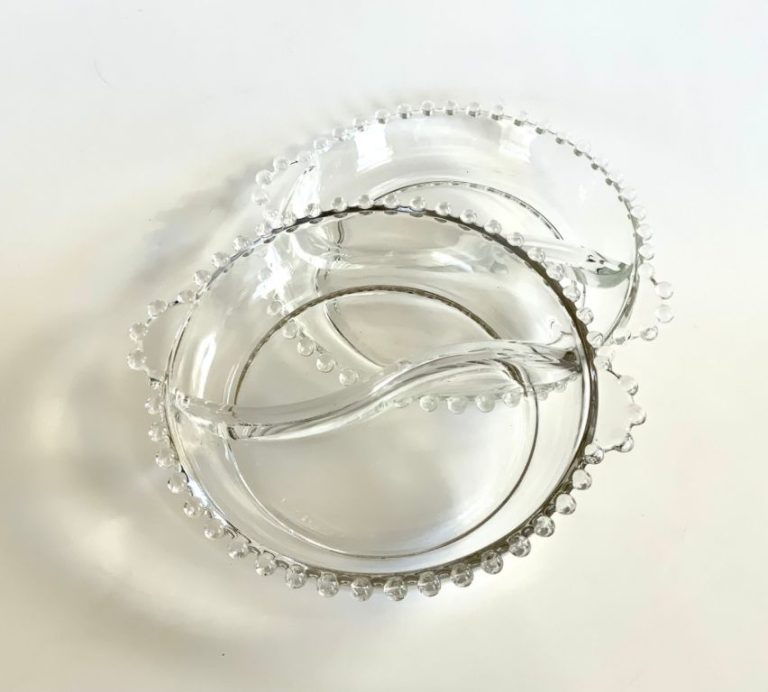What Happens If You Overheat Soy Wax?
Soy wax is a vegetable wax made from the oil of soybeans. To create soy wax, the soybeans are first harvested, cleaned, cracked, de-hulled, and rolled into flakes (Candlescience). The oil is then extracted from these flakes and undergoes full hydrogenation, which converts it into a triglyceride containing a high proportion of stearic acid (Wikipedia). This chemical transformation results in a wax with properties suitable for container candles.
Properly melting soy wax involves gradually heating the wax to a temperature between 185-200°F and avoiding overheating above 220°F. Overheating can happen accidentally if the wax is heated too quickly or kept molten for too long. Overheating induces chemical changes in the wax that negatively impact the candle’s performance. This article will examine what happens when soy wax is overheated and how to avoid common issues.
Melting Point
Soy wax has a relatively low melting point compared to other waxes. According to BlendedWaxes.com, low-melt soy wax melts at around 130°F while high-melt soy wax melts at around 160°F. Proper melting temperature is important for working with soy wax and making candles. If the wax is not fully melted, it can lead to an uneven appearance, poor scent throw, and issues with properly wicking the candle.
Going over the recommended melting temperature for soy wax can cause problems. Heating the wax too high can burn the wax, resulting in discoloration and an unpleasant smell. It can also start to break down the chemical composition of the wax. This can change the behavior of the wax, making it difficult to work with. Overheating soy wax essentially ruins the wax, so it’s important to closely monitor the temperature when melting it for candle making.
Chemical Changes
When soy wax is overheated past its melting point, around 160-165°F, chemical changes start to occur in the wax’s composition and structure. The primary components of soy wax are hydrocarbons, free fatty acids, and triglycerides. At higher temperatures, these components begin to break down and decompose through oxidation and polymerization reactions.
Oxidation causes the soy wax molecules to break apart, creating aldehydes, ketones, and carboxylic acids. This chemical change produces a rancid odor in the wax. Polymerization links the hydrocarbon molecules together into larger polymers, altering the wax’s structure and consistency.
These chemical changes degrade the quality of the soy wax, making it unsuitable for candle making. The altered scent, texture, and burning characteristics will negatively impact the performance of candles. Overheated wax may clog wicks, become too brittle or soft, and lose its ability to hold fragrance (Cited from: https://www.quora.com/What-happens-if-you-overheat-candle-wax). Rebatching the wax can sometimes recover overheated soy wax, but extensive chemical damage may be irreversible.

Candle Issues
Overheating soy wax can negatively impact candle performance in a few key ways. The most common issue is sinkage, which is when wax adheres poorly to the container sides and leaves an unsightly gap between the wax and the container. Overheated wax loses its ability to cling to surfaces and shrinks as it cools, pulling away from the container walls. This results in the sunken, concave appearance of the candle surface.
Another problem is frosting, which occurs when soy wax crystallizes on the surface of the candle. Soy wax contains saturated and unsaturated fatty acids that crystallize at different temperatures. Overheating drives off some of the unsaturated fats, resulting in incomplete blending of the wax components. Upon cooling, the saturated fats solidify first, creating a chalky whitish coating on the candle surface. This effect is purely cosmetic and does not impact burn performance.
To avoid issues with sinkage and frosting, it’s critical to avoid overheating soy wax above the recommended temperature range. Generally this is between 120-160°F, though optimal temperatures can vary by wax brand. Consulting manufacturer guidelines can help determine the ideal melt point for a given soy wax to maximize proper adhesion and texture.
Candle Scent
Heating soy wax to temperatures above 180°F for extended periods can negatively impact candle fragrance. According to experienced candle makers on Reddit, “You shouldn’t ever need to heat [soy] wax hotter than 180°F when making candles” (Source). Excessive heat can cause fragrance oils to “burn off”, resulting in candles that lack scent throw even when freshly poured. Additionally, overheating may alter the intended fragrance, giving candles an unpleasant or burnt odor.
To preserve fragrance when working with soy wax, candle makers recommend heating to 180-185°F, then reducing heat to ~175°F before adding fragrance oils. Quickly yet gently stirring fragrances in just until blended will also help prevent losing scent to high temperatures. Properly managing wax temperature is key for maximizing fragrance throw in soy candles.
Rebatching
If you overheat soy wax, it is often possible to recover and rebatch the wax to make it usable again. According to the Soapmaking Forum, if the wax is still fresh, you may be able to rebatch it in a crockpot without adding much additional liquid, or just a small amount (Source: https://www.soapmakingforum.com/threads/overheated-soap.26961/). The key is to gently remelt the wax at a low temperature, avoiding any further overheating. Stir periodically as it melts to incorporate any separated oil. Then pour the rebatched wax into molds to reset it into blocks or chips. The resulting wax may not be quite as high quality as before overheating, but it can often still be used to make votive candles, melt and pour soaps, or other candle products. Take care not to overheat the rebatched wax again. Proper double boiler methods, thermometers, and vigilant monitoring of temperatures is essential.
Safety
Overheating soy wax can create several safety concerns that candle makers should be aware of. When soy wax is heated beyond its melting point of approximately 120-160°F, the wax molecules start to break down and go through chemical changes.
One safety issue is that overheated wax may combust or catch fire more easily if the wax reaches extreme temperatures above 350°F (1). The auto-ignition point of soy wax is around 427–500°F, but bringing the wax anywhere close to those high temperatures in candle making is extremely dangerous (2).
Another potential hazard is overheated wax splattering or bubbling up aggressively when wet wicks are added or water is present. The wax is less stable at very high temperatures and introducing moisture can cause dangerous splashing (3).
Additionally, overheated wax lacks stability and can leak or seep out of containers more readily. If making container candles, overheated wax may leak out the bottom or sides of a glass or metal vessel when cooling and shrinkage occurs (4).
It’s crucial to heat soy wax slowly and evenly, stirring periodically. Never leave heating wax unattended. Overheating can degrade wax quality and pose safety risks.
Storage
Proper storage is crucial for preventing soy wax from overheating again. Soy wax should be kept in a cool, dry area with consistent temperature and humidity. Ideal storage temperature is between 60-80°F. Temperature fluctuations can cause the wax to sweat and lose fragrance. Humidity should remain below 50% to prevent frosting of the wax surface.
Store soy wax in sealed, airtight containers like plastic buckets with tight lids. Keep the wax away from direct sunlight or heat sources like appliances or vents. Storing wax in the refrigerator is not recommended as condensation can form when the wax warms up. Freezing the wax could also cause it to sweat when thawing. An optimal storage location is a closet, basement, or garage. With proper storage, soy wax will maintain its quality and scent throw.
For fragranced wax, storing in cool temperatures helps to preserve fragrance oils. Transferring melted wax to smaller jars can also minimize air exposure. Always store wax in clean, dry containers to prevent contamination. Follow these soy wax storage tips to retain scent and avoid overheating.
When to Toss
At what point is overheated wax unusable? Soy wax that has been severely overheated to the point of burning or scorching is not salvageable and should be discarded. According to CandleScience, if the wax has turned brown or black, emits a burnt plastic smell, or contains charred bits, it is a sign the wax has been irreparably overheated and will not perform properly anymore (Soy Wax Troubleshooting Guide). The chemical composition and integrity of the wax has likely changed. NZ Candle Supplies also advises throwing out soy wax that has been burnt or scorched, as it will not make good candles anymore (Tips & Tricks When Making Soy Wax Candles). The experts agree that once soy wax has been burnt beyond recognition, it’s time to discard it and start fresh with new wax.
Conclusion
Soy wax should never be overheated, as this can cause chemical changes and ruin candles. The key takeaways are:
- Soy wax has a low melting point between 120-160°F.
- Heating soy wax above 180°F will cause its chemical structure to break down.
- Overheated soy wax loses its ability to hold fragrance and can cause issues like frosting and poor scent throw in candles.
- Discoloration, acceleration, and rancid smells indicate soy wax has been overheated.
- Rebatching may help restore some properties, but overheated wax is best discarded.
- Properly store soy wax to avoid accidental overheating.
In summary, soy wax requires care when melting to preserve its candlemaking properties. Monitoring temperature and avoiding overheating produces the best soy wax candles. With proper handling, soy wax can create clean-burning, fragrant candles.




